Paul Charlemagne; Cubism without Style
This Essay demonstrates the use of “Dimensional Design Theory”, to practise new ways of looking at art, following up on the essay “End of The Line.”
The painting I am discussing today I found by chance, in the depot of a Brocki (Brockenhaus {Second-Hand shop}), at an industrial park of a small town, exactly in the middle of Switzerland. Shelved away between a vast array of all kinds of items.
Everything was in there; African Hats, clothes, vintage furniture, toys, mirrors, empty bottles of wine, and hundreds of paintings. All stacked in boxes and racks, ordered conveniently in rows and sections.
“Wow! What's that?”
A magnificent production peeked into the upper corner of my left eye.
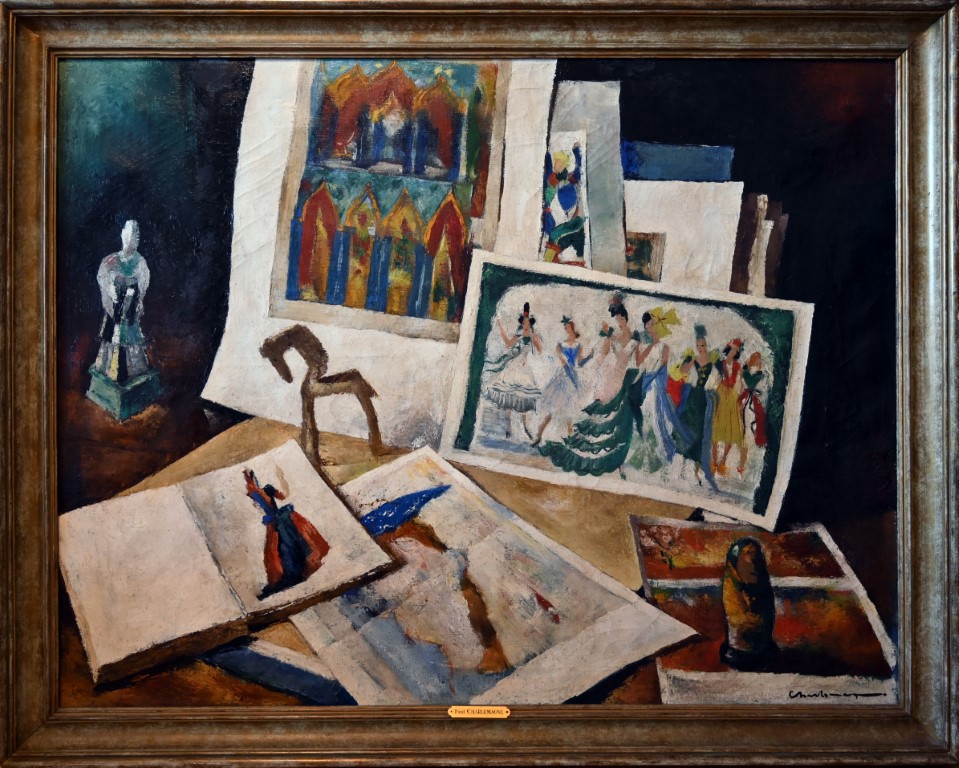
This painting really stood out between all the other not so remarkable items at display in the storage. Not only because of its interesting depiction, but also because of its sheer size. On the authentic frame the label of its creator: Paul Charlemagne.
I never heard about that name before. A collection of seemingly random items and snapshots, mmm. I turned the painting around and I found…
…What did I find?
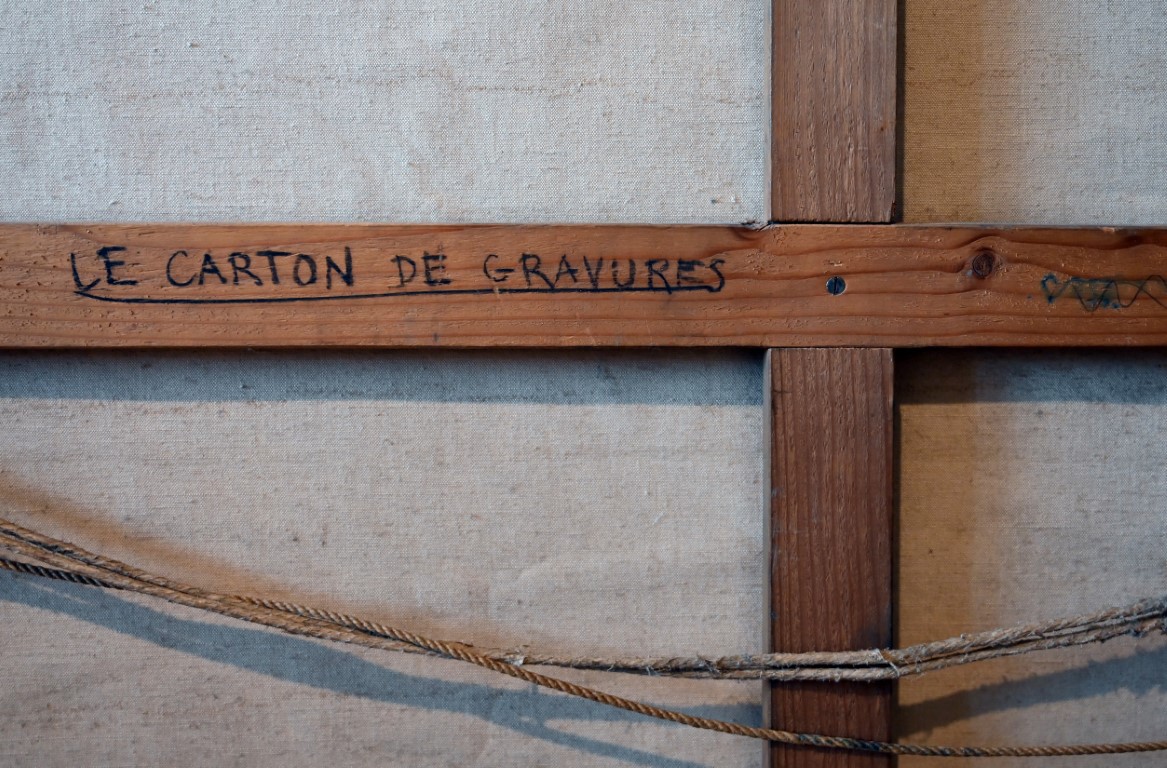
The friendly man who helped me navigate around said that Paul Charlemagne was standing there, in the corner, for years. It was enormous, nobody wanted it. He was happy I could take it with me.
This painting is made to be hung inside a gallery or a museum, it doesn't fit well on the walls of our apartment, or any apartment in that sense, nonetheless I took it with me.
Sometimes when I looked at it, while it was standing in the corner of our living room the last two years, I wondered:
Why is this painting so immense? It could have been painted three times smaller,
…but years later I noticed it, something substantial, up close it has a beautiful cubist optic.
Picture-in-Picture [PiP]
Not much is published about the artist Paul Charlemagne (1892 Paris — 1972 again Paris). Several internet searches led me to depots of museums, Centre Pompidou has seven paintings and one peculiar painting is stored in the collection of the Dutch Kröller-Müller Museum, (This museum has a beautiful Mystical Garden, filled with amazing sculptures, pavilions, trees, plants, flowers, and a pond).
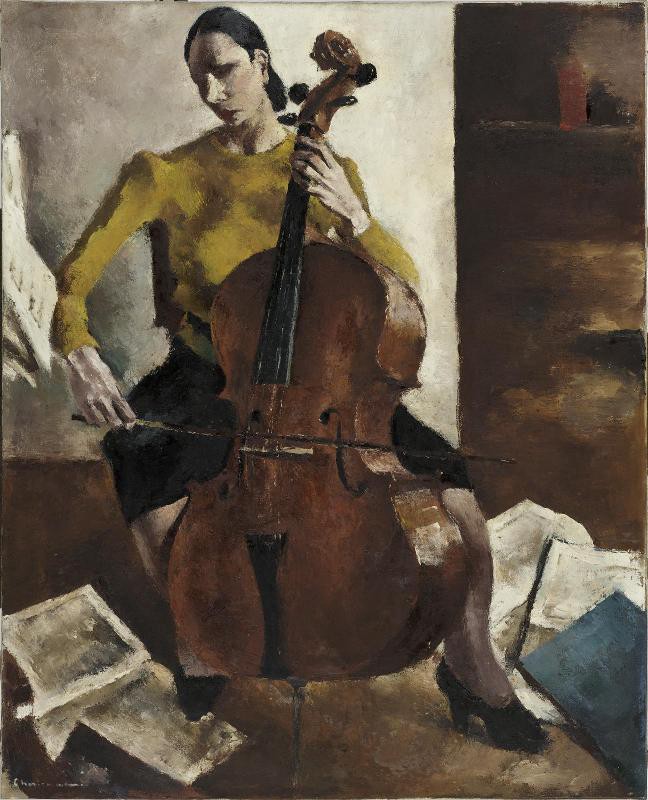
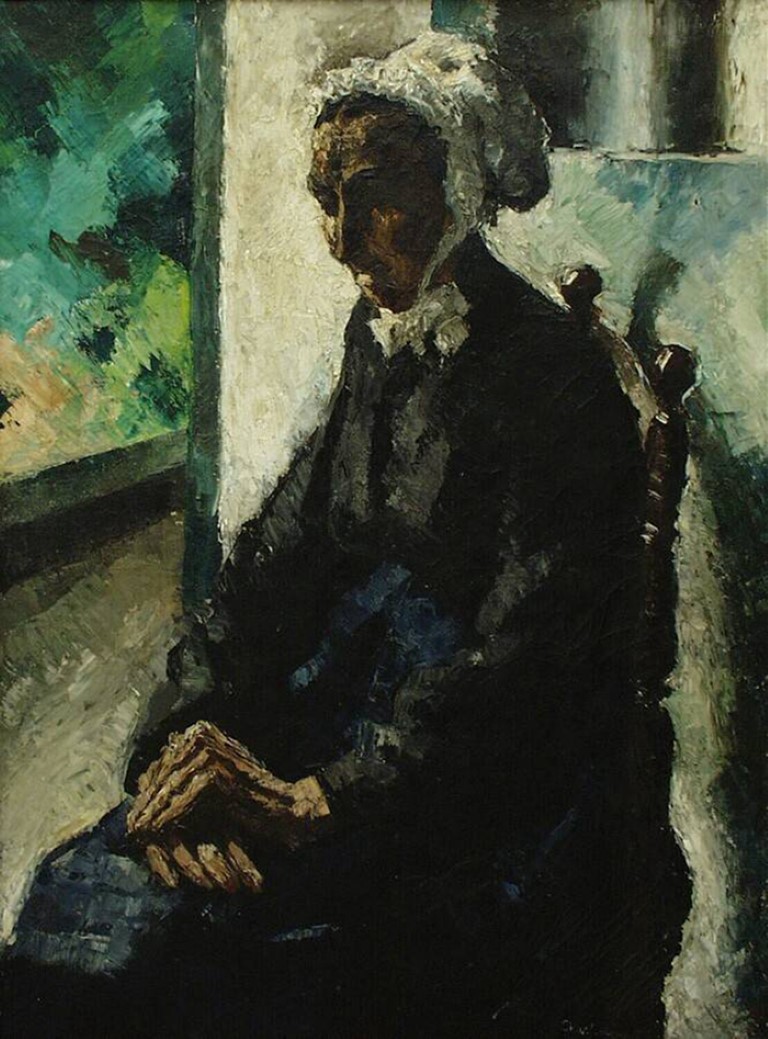
What else can we find out about this mysterious artist…
Paul Charlemagne also illustrated books, poetry, he is described as a painter of flowers, water-colors, tapestry and he even won a prestigious France art prize, The Prix Blumenthal in 1923.
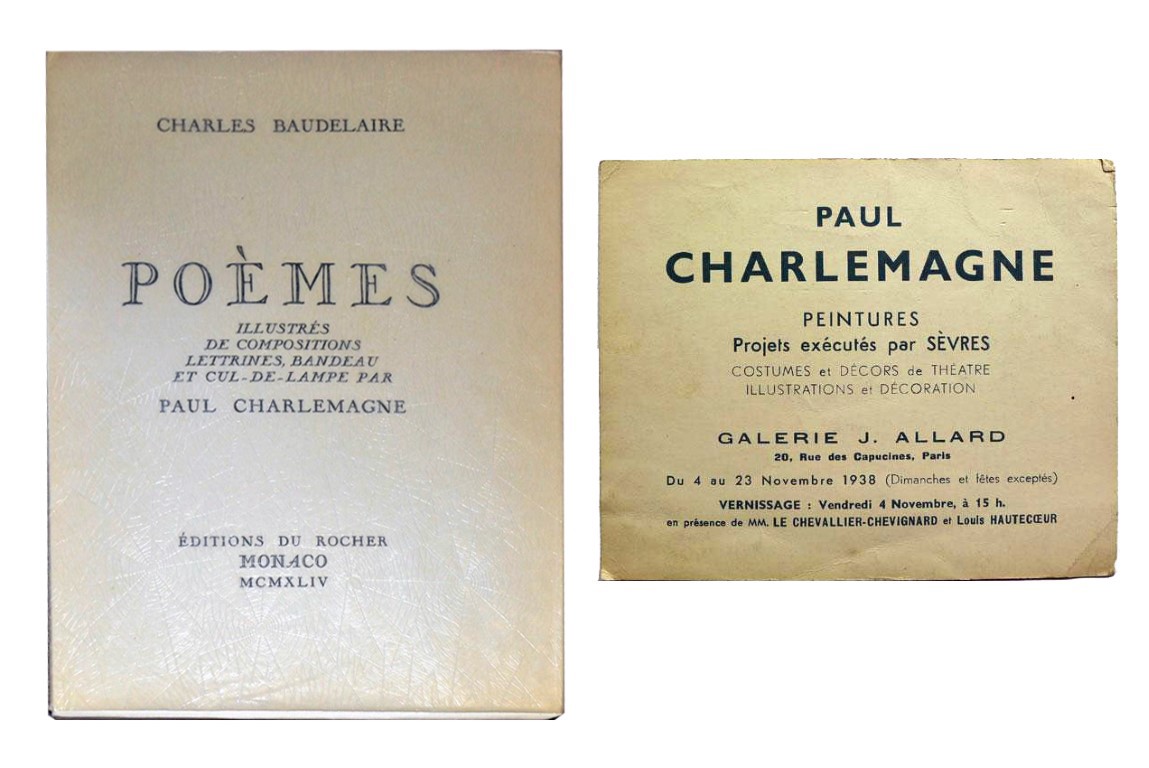
He was quite a popular artist in his moment suprême, Charlemagne exposed in the Galerie J. Allard, a place where also de Chirico had an exhibition. Charlemagne also exhibited regularly at the infamous Salon des indépendants & Salon d’automne, along Kees van Dongen, and Jan Verhoeven.
After a couple months of Sherlocking around I found two announcements of the Chester H. Johnson Galleries. To my suprise, Charlemagne was hanging there alongside the other great heroes of art; Cézanne, Picasso, Braque, and the other bit players.. They were all there, together in one room.
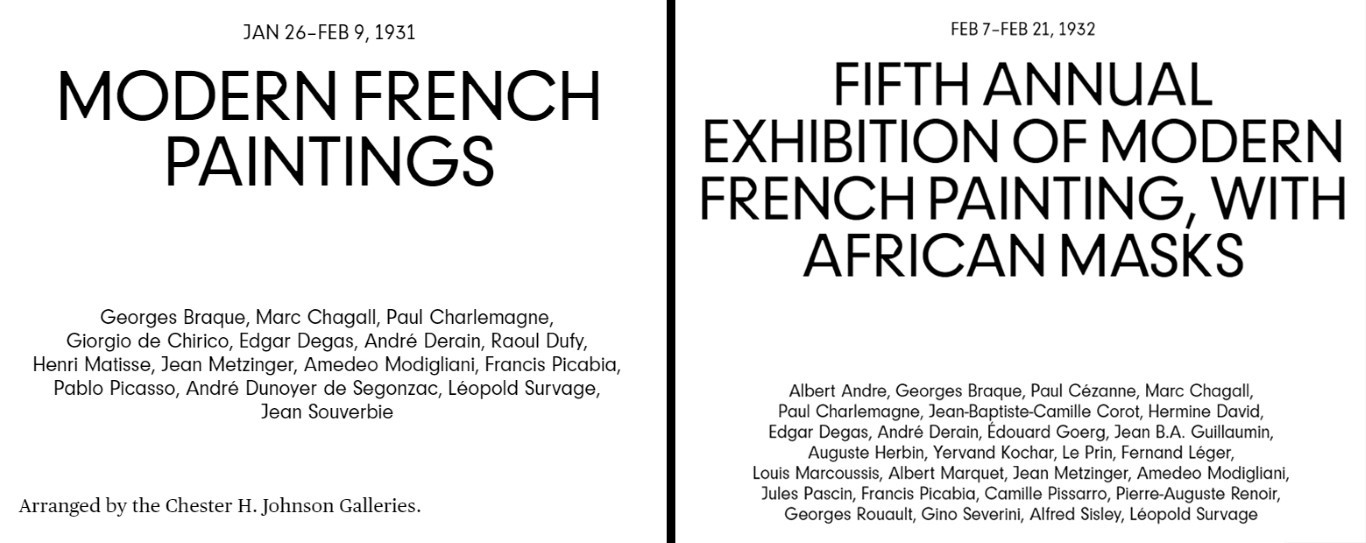
A fine collection of painted works Charlemagne produced during his lifetime.
Flowers, women, instruments; reccurring themes; an open case, a violin, more paintings of flowers, stacked on top of even more flowers, a sailing boat and a tea-pot, an interesting mess of a bunch of objects lying around.
Here is small gallery with some of his work:

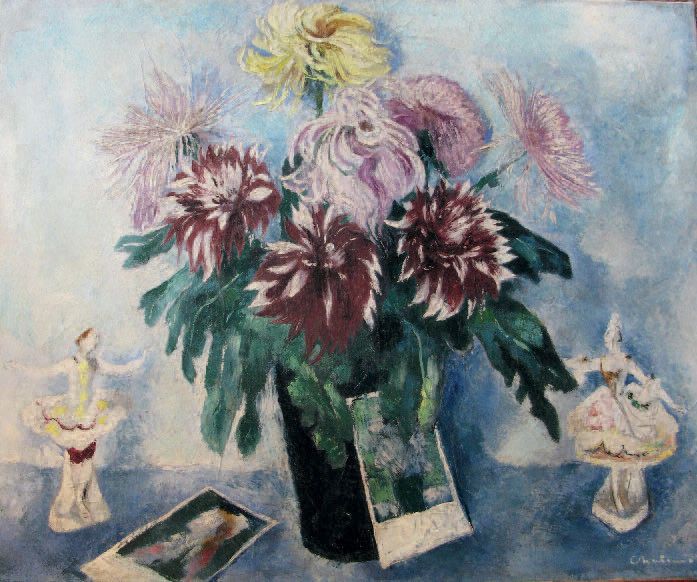
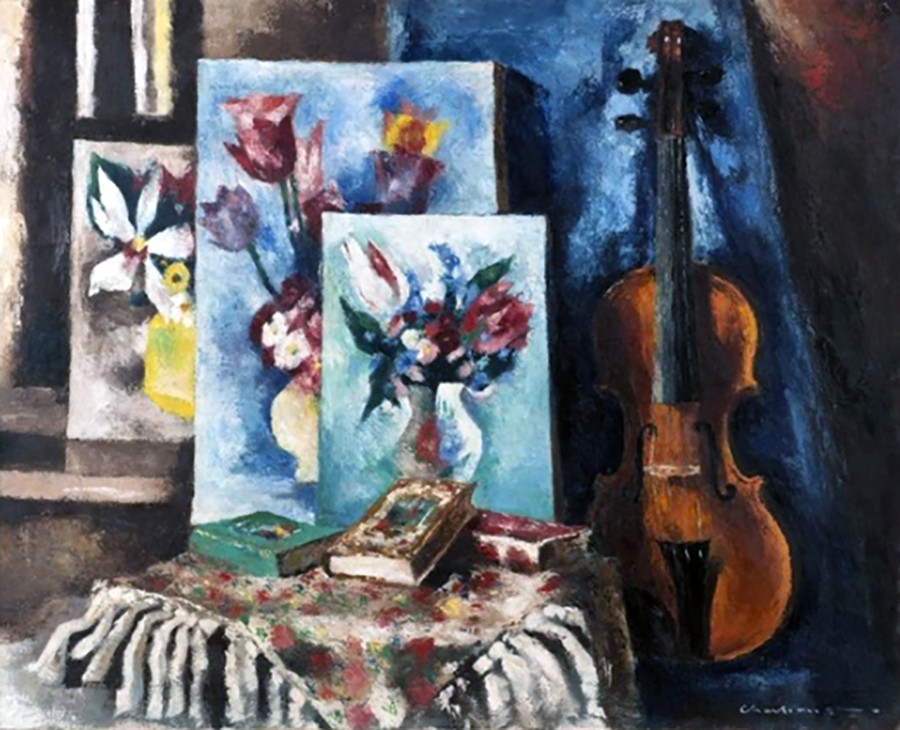
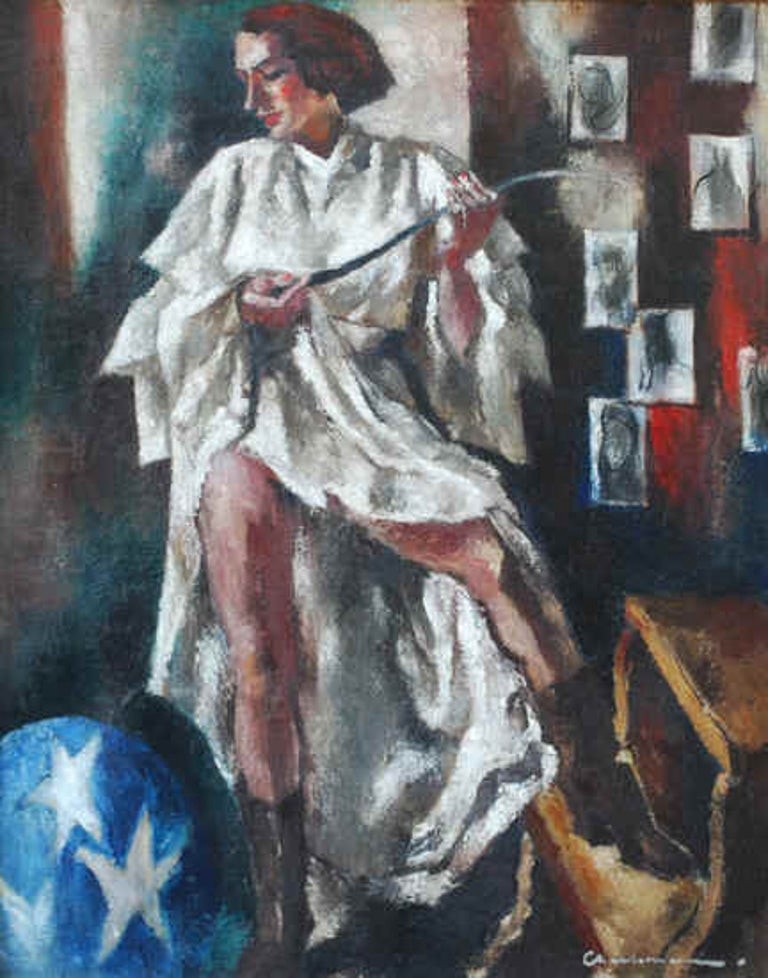
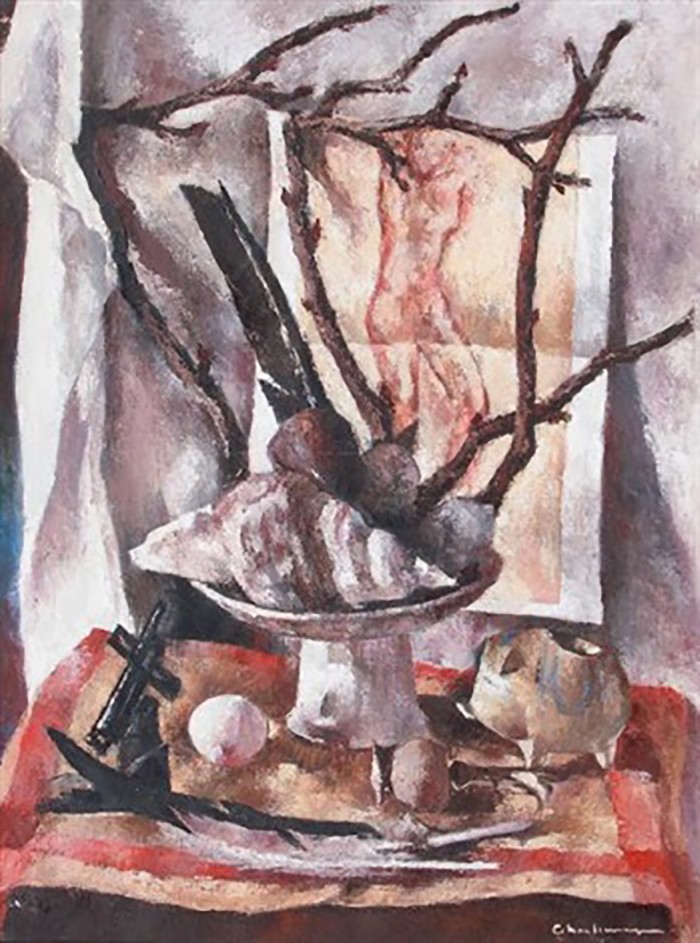

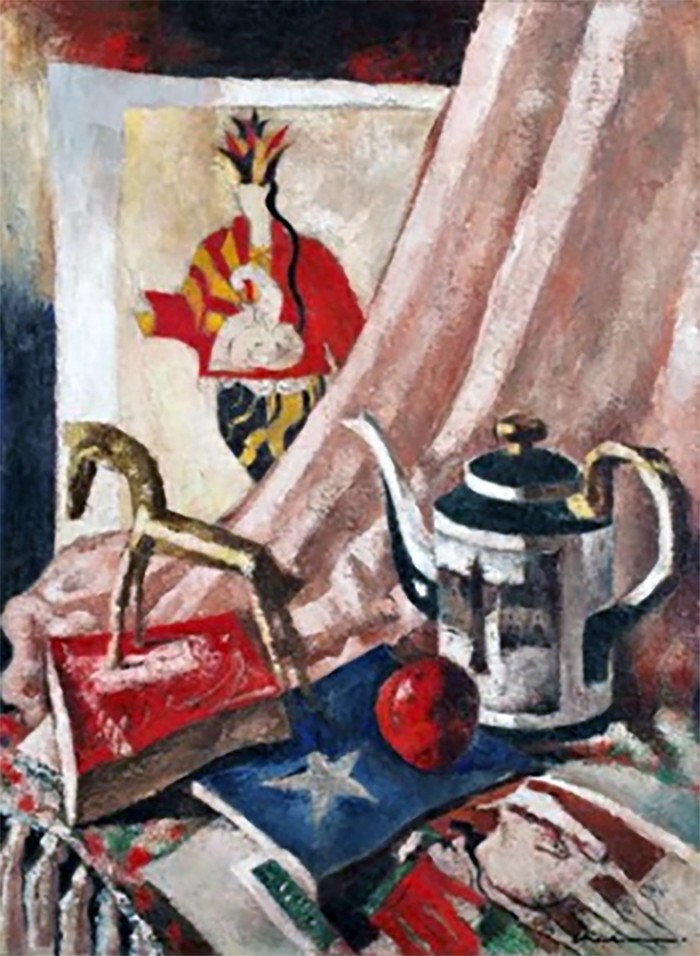
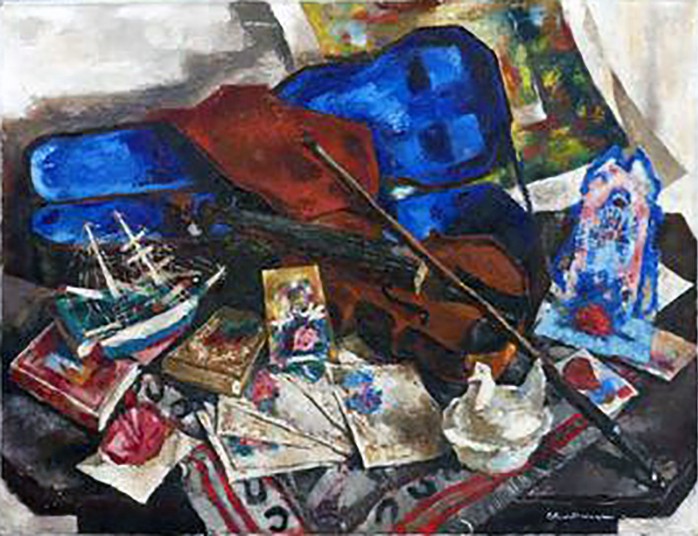
Nonetheless, the goal of this essay is not to discuss all of that, all his images, the complete life trajectory of the artist. Nor am I interested in analysing his work through history,through literature, through secondary eyes.
We will use our own vision, with applied Dimensional Design Theory we are going to unravel the underlying principles of “Le Carton de Gravures”.
Les Grands, les Petits et les Super Cubists
It’s a very common mistake to falsely attribute the invention of Cubism to Picasso. As stated in the essay Abstract : Reality [Shadowplay], most major discoveries and inventive contributions in art, science and any other domain are made in pairs. Some examples we discussed in previous essays are Rembrandt ~ Lievens, Van Dongen ~ Verhoeven, Huygens ~ Fresnel.
Picasso didn’t work alone in his times either, for a while he shared his physical and mental space with another Super Cubist, but the little bit lesser-known of the two, the artist Georges Braque.
Both artists stand on the shoulders of the grandfather of them all; Mr. Orange aka Cézanne, who himself blossomed out of Impressionism.
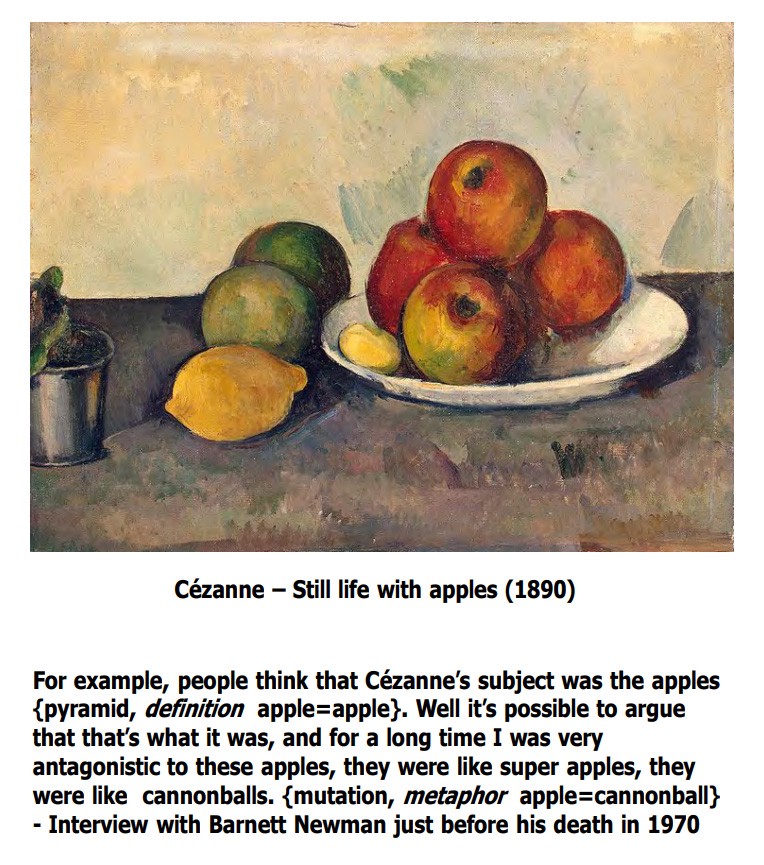
C: “I wanted to make of Impressionism something solid and enduring, like the art in museums.”
Braque and Picasso even worked alongside, literally alongside, sharing a house in a secluded small town somewhere in the heart of France. That is where the roots of what we call Cubism today started.
Living like monks, they worked separately, in their own rooms, on the second floor of the house, painting every single day.
The legend says that Braque entered the door one day, with a collage of newspaper cut-outs, scraps of papers and bills, this triggered Picasso to start working on the theme. Picasso in return made a painting with the same kind of aesthetics as Braque his collage.
Braque saw the painting the next day first-hand; he was struck as lightning in an empty desert storm. Braque followed up with another painting, showed it to Picasso and continued with the new-though-line both men set out.
Many productive days passed by, which, in return, moved into months.

After months of painting their results started to become almost completely identical in style, stroke and touch, you could barely see who painted what. Their two divided rooms merged together into one unified Artist Room.
Some time later, when both men arrived back in Paris, many modern artists started to follow the new way Braque and Picasso set out with their realized cubistitic vision. These other Parisian artists copied the main principles, the stylistic attributes of Braque ~ Picasso, but there were only a few exceptional artists who could push the boundaries even further.
Artists that could diversify the set of rules of cubism, and fit it all into a personal flavour. One of those artists is the third Super Cubist, my favourite Spanish; Juan Gris.
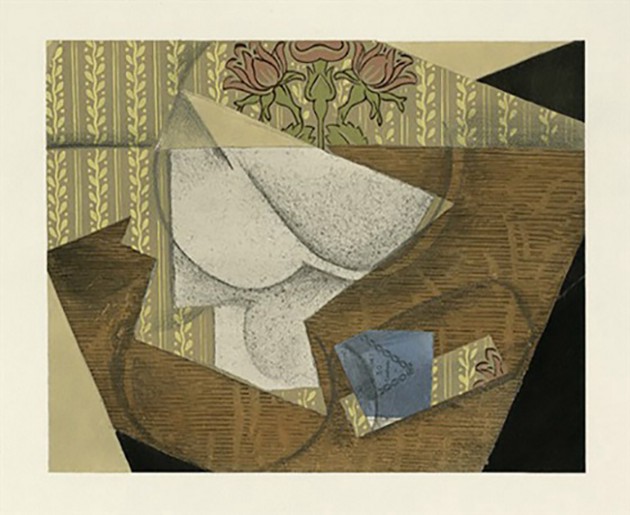
A lot of other artists working at that time could make wonderful images in this new visual language, but as time proceeded the main intentions Picasso ~ Braque had with their first Cubist works, how they discovered a new way of seeing the world, faded into the background. Further artistic realization followed by Theo van Doesburg ~ Joaquín Torres-García for example, which caused another shift in style.
What survived of cubism itself, is the mere surface of decorated shapes, planes and lines.
X [Holding a Box of Swiss Chocolates]: What has this to do with the painting of Paul Charlemagne, it doesn’t look Cubist at all?
Part Deux
In a previous chapter on applied Dimensional Design Theory, we discussed Dürer’s monistic masterpiece. We will use the same methodology to unravel this work of art, going through the five different dimensions of seeing.
1 Close-up Cubism
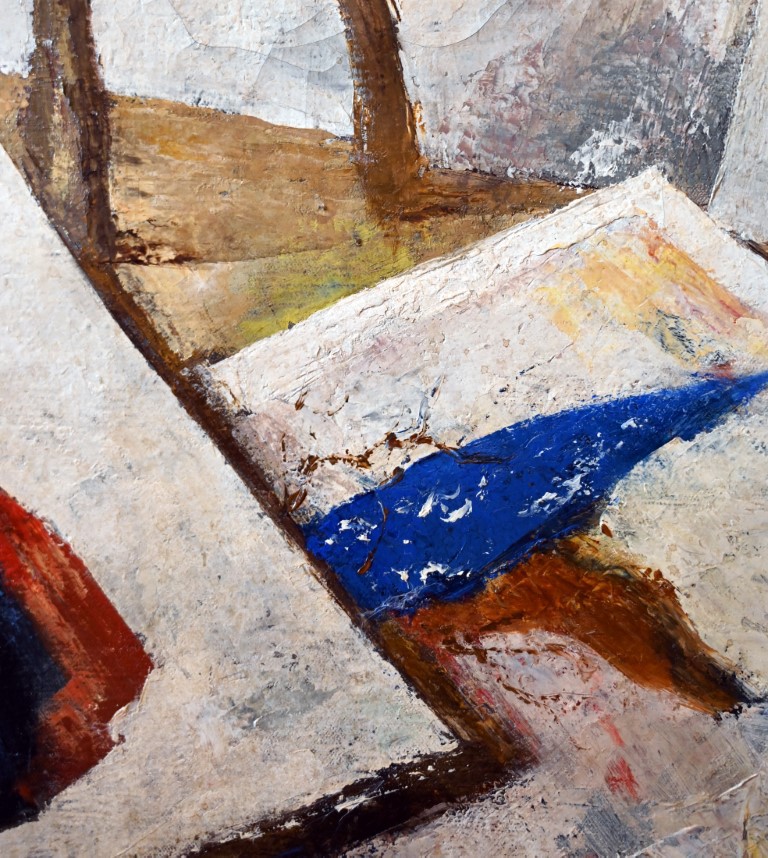
The painting measures 116 x 90cm (oil on canvas).
Albrecht Dürer painting was extraordinarily small with a lot of detail in it, this depiction; Le Carton de Gravures is amazingly large and lacks details. When I think about this work, without seeing it, I always remember it completely full, but it is quite empty, there is a lot of blank space in it.
2 Polaroid Snapshot
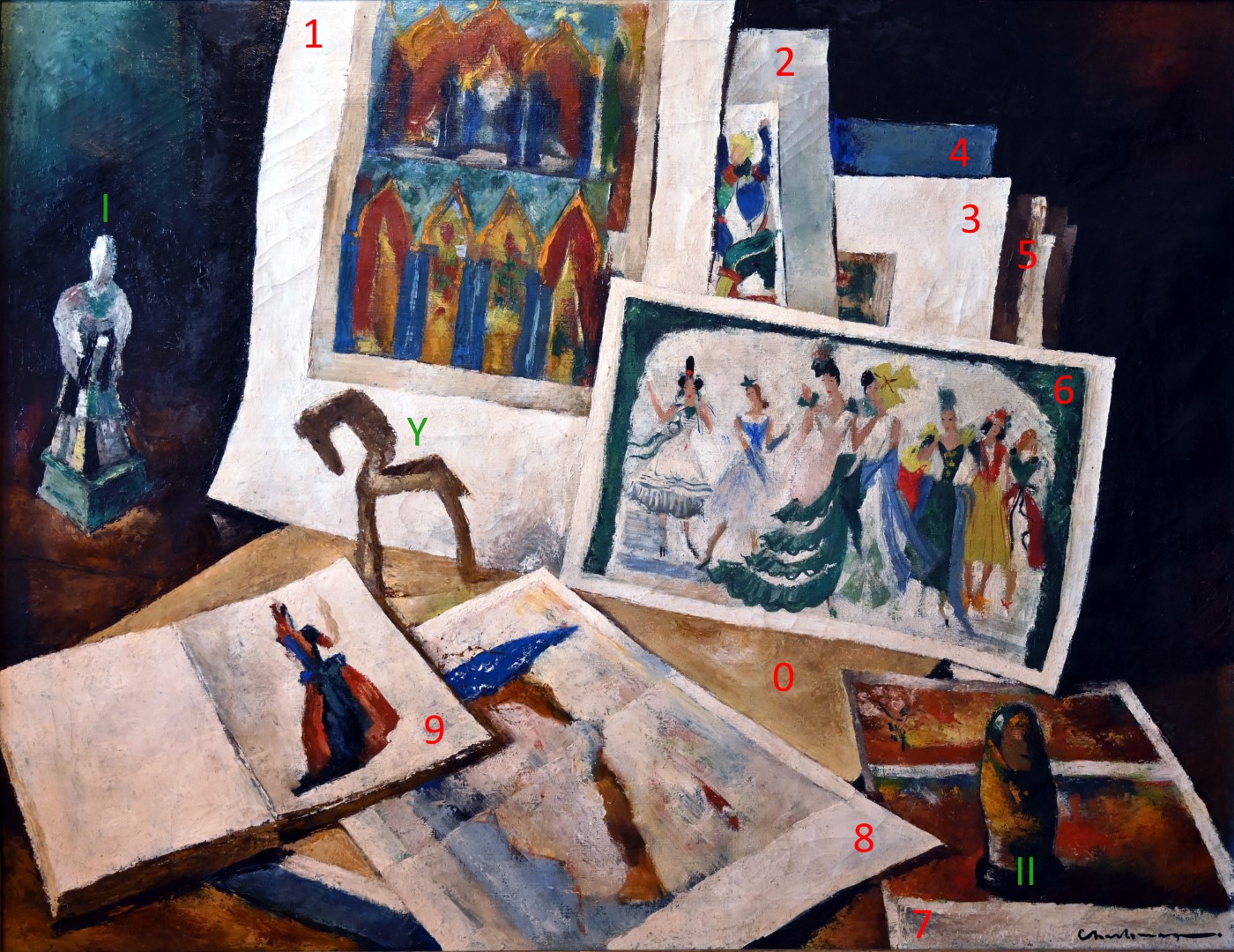
Paul Charlemagne, Le Carton de Gravures with numbers
There is a pile of sheets with images stacked on top of each other, III models are positioned around.
- Architectural shapes, colourful leadlight.
- Motif, design pattern, figures stacked behind 1.
- Blurrier image stacked behind 2.
- Blue sky, pardon paper behind 3., and behind the blue.
- More dusty white papers behind the blue.
- A group of dancing ladies nicely dressed stacked at the front corner of the leadlight sheet.
- Two hazy images, on top a Russian Matryoshka doll
- A folded paper, two almost identical backgrounds, on the left side a blue figure.
- A book with an open empty white page on the left, and a woman in a blue/red dress holding her arm up, waving
11. A small statue of a man in traditional Asian clothes.
0. Earthly tinted book, with blue and white section
3 Nd5; Knight takes Bishop
Let us take a closer look at the three totems, to examine it further.
I. The Korean Man
I asked a Korean friend, a wise man, if he knew the figure standing in the painting.
Korean Man: I remembered him, yes of course. I remember him of the painting I used for my bachelor’s degree,
Peter Paul Rubens, he is the Korean Man!
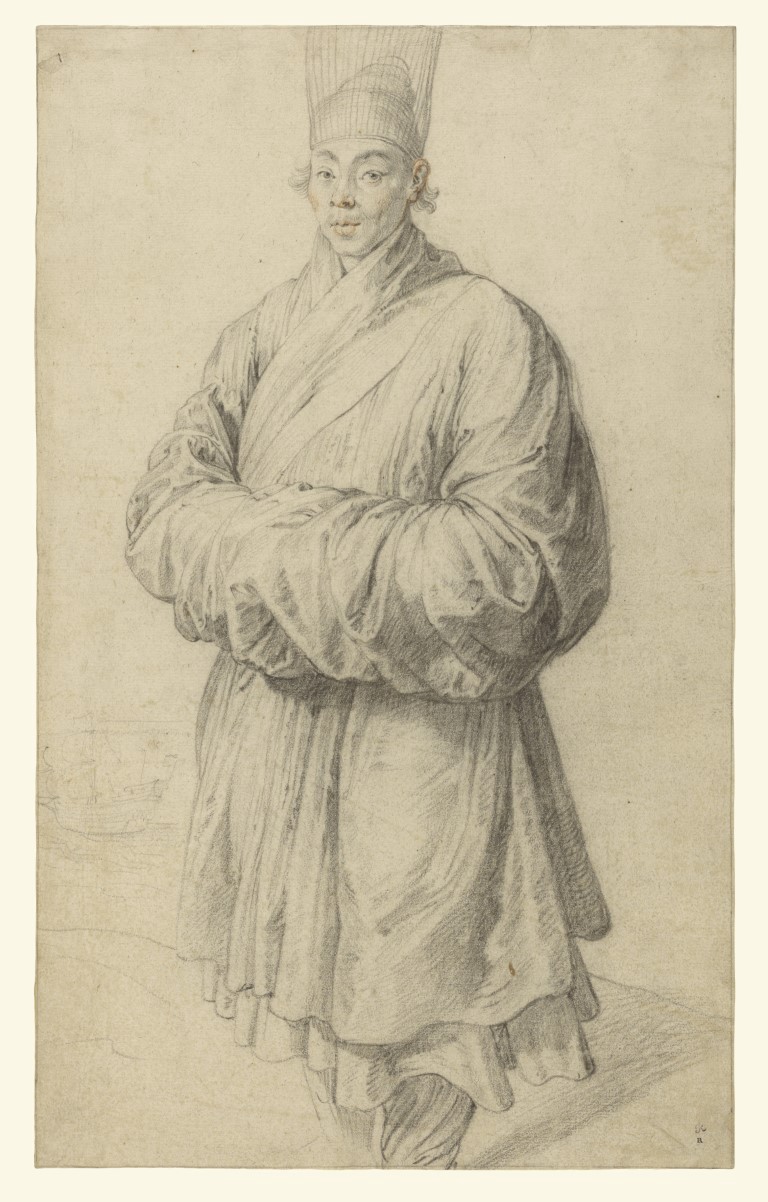
Did he really see a Korean man? How then, and when?
Korean Man: The figure might well be Chinese or Korean, the silk style clothes, the posture, but he is definitely not Japanese.
II. Matryoshka doll

Matryoshka came from the Latin word “mater” which means “mother”. The classical style of the matryoshka brings memories of a life once appreciated.
Inside a matryoshka doll you would find the same matryoshka doll, but a bit smaller, inside that one another smaller one, it turtles all the way down. The same colours decorating the Matryoshka are spread-out on a sheet split into II frames of watery images.
Y. Horse
The horse seems to be an imaginary horse, and not a projection of a real-life horse.
X: What do all these snapshots, this bunch of totems mean? And this funny horse in the middle, it all seems so random?
∞ Infinity
A folded — II-sided image, a Rorschach plot…, the blue figure, it reminds me of The Isle of the Dead by Arnold Böcklin. A copy of that work inspired Rachmaninoff’s famous symphony.

Rachmaninoff was disappointed by the original painting when he later saw it, saying: “If I had seen first the original, I, probably, would have not written my Isle of the Dead. I like it in black and white.”
4 Nd5; Knight takes Bishop
Our third dimensional step did not bring so much this time, as there is not much to find in the symbolic meaning of these singular objects standing alone, and all those snapshots lying around.
We must look at the arrangement of the whole, the exchange between the impressions and the III totems.
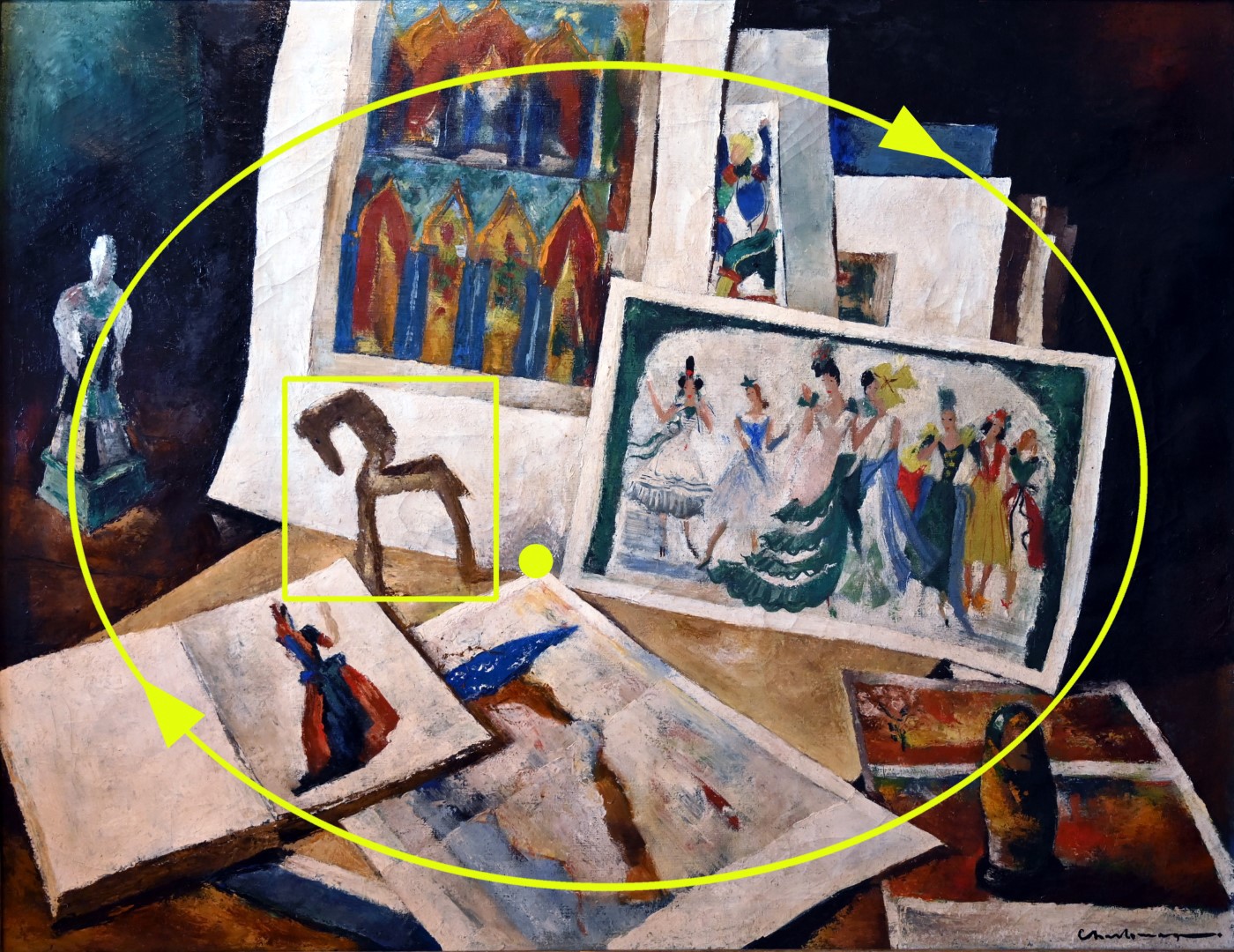
By the careful and inventive way of selecting, placing, and arranging objects Charlemagne did not visualize an overall symbolic meaning with this painting, with answers lying outside the frame. It is also not just a dance, or a type of visual play.
Charlemagne visualizes the self-referring circular process of mind; [Box of Memories]. He reached a higher state in understanding the world around and could visualize his process of realization into one stunning image.
As in Dürer his monistic masterpiece M1, this painting is a representation of a process, the process of memory in this case. The sheets of impressions {engravings/gravures} are arranged circular with the imaginary horse somewhat in the middle.*
*Visualizing the self-referring circular process can be discovered in the work of many other artists, independent from time, style, place and circumstance. These kinds of work I coin Time ~ Art and will be further explained in Time ~ Art; Velázquez, Kandinsky & Newman and the book Imaginational Theory [2014]
5 Time ~ Art
The Cubist, inspired by the poet’s and scientists of their times, eagerly wanted to find a new way to construct the image of reality. Triggered by the earliest edited movies being projected around in Paris, they invented a way to visualize a multi-projected view into one singular object; a hyper-dimensional object.
C [played by M]: Well, if I twirl around I’m not going to do it very fast, not like those other guys.
Charlemagne made an exceptional Cubist work, without falling into the traps of copying the cubist achievements of Braque ~ Picasso as a mere stylistic trade of the times. He chose instead to stick to his own “original” direction and constructed an outstanding painting wrapped inside an everyday visualized still-life.
Le Carton de Gravures : Box of Memories
[Extra] The 6th Dimension
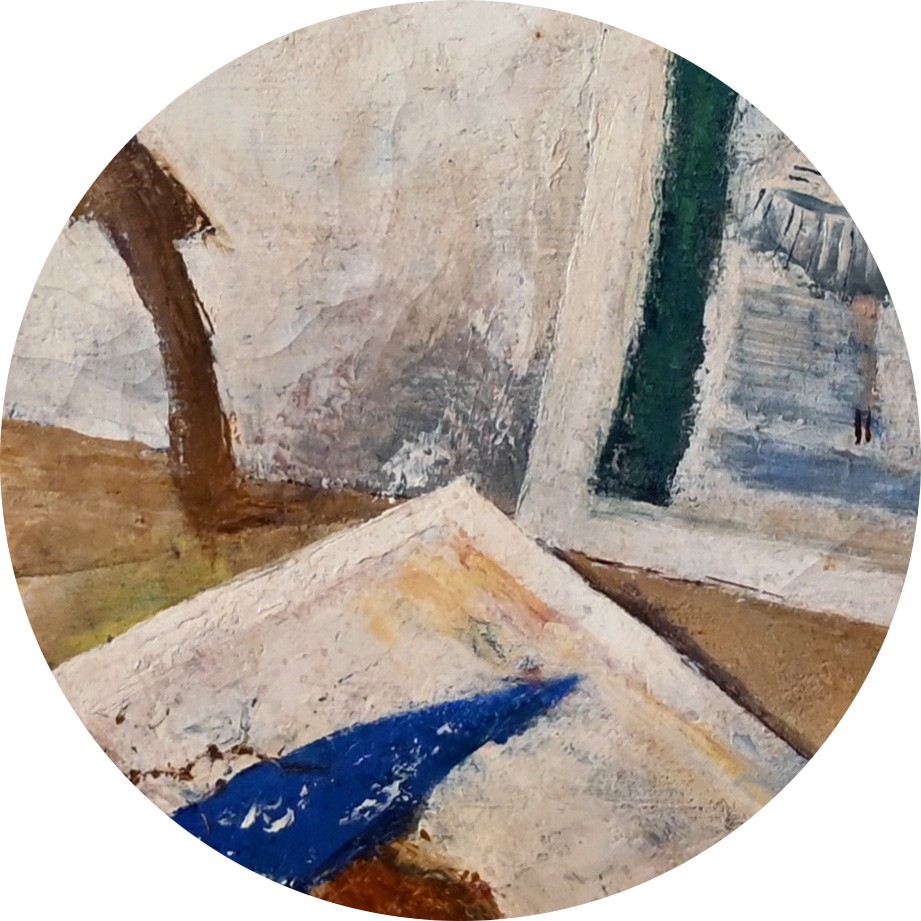
A rotating body not only attracts things but also sets up a field of force. It is a bit like a magnetic field, spinning around one point, the rotation of the whole world inside us depicted in Charlemagne his painting.
In other words, if this process of rotation did not exist there could be no balance[Rorschach plot] between the rotating frames of reference and the point at rest.
Therefore I state that there must be a centrifugal force, to cause the rotation between all frames of reference {projections}, which requires awareness to be perceived. The existence of a centrifugal force can be deduced from this same reasoning.
What else could be producing the centrifugal force while spinning around in one’s mind?
You should really perceive into stillness, a point of non-locality, and it’s only at that point, standing in the middle of reference {projections}, that you will get aware of the centrifugal force as the effect of passing through the frames of reference. In this configuration each observer sees his/her entire universe as rotating around him.
Paul Charlemagne; Cubism without Style by Marcel Moonen. M. Production. Text may not be reused without authors agreement. [EDUCATIONAL PURPOSE ONLY] Triple-A Society Published on 21.05.2021